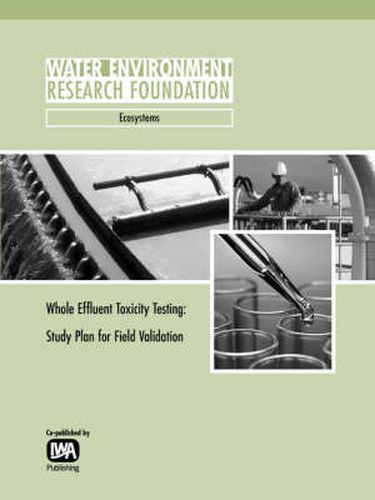Readings Newsletter
Become a Readings Member to make your shopping experience even easier.
Sign in or sign up for free!
You’re not far away from qualifying for FREE standard shipping within Australia
You’ve qualified for FREE standard shipping within Australia
The cart is loading…






Under the National Pollution Discharge Elimination System (NPDES), many municipal and industrial wastewater treatment facilities must perform Whole Effluent Toxicity (WET) Testing. Regulatory agencies determine the level of compliance of each facility by making inferences about the results of these tests. There has been some concern regarding appropriate ways to integrate WET tests into NPDES permits. The central issue of this concern involves determining the relationship between WET tests and instream biological conditions. Previous research (WERF project 95-HHE-1) has examined this issue using historical data. Because of issues with data comparability, i.e. questionable data quality, and project design, results were inconclusive. This study plan was designed to collect new data on method performance for both WET and bioassessment that would help answer the outstanding question. The study plan was designed using a Data Quality Objective (DQO) approach in which DQOs and MQOs were defined. These DQOs and MQOs were characterized using technical input from many scientists from federal, state, and private organizations. It was through this effort that certain technical design issues arose that needed further investigation before implementing the definitive study. Among these issues were determining if DQOs and MQOs were achievable, and determining appropriate biological assessment methods for various ecoregions (e.g. effluent dependent streams in the arid west). In order to appropriately address these issues, it was determined that a pilot study would be implemented before the definitive study. The pilot study is designed as a one-year study in which participating facilities will perform quarterly WET tests (Ceriodaphnia, P. promelas, Selenastrum) and at least one bioassessment (macroinvertebrate, fish, algae) as well as providing other prescribed data requirements. Results of the pilot will provide answers to technique design issues and will ultimately determine the most appropriate study design for the definitive study.
$9.00 standard shipping within Australia
FREE standard shipping within Australia for orders over $100.00
Express & International shipping calculated at checkout
Under the National Pollution Discharge Elimination System (NPDES), many municipal and industrial wastewater treatment facilities must perform Whole Effluent Toxicity (WET) Testing. Regulatory agencies determine the level of compliance of each facility by making inferences about the results of these tests. There has been some concern regarding appropriate ways to integrate WET tests into NPDES permits. The central issue of this concern involves determining the relationship between WET tests and instream biological conditions. Previous research (WERF project 95-HHE-1) has examined this issue using historical data. Because of issues with data comparability, i.e. questionable data quality, and project design, results were inconclusive. This study plan was designed to collect new data on method performance for both WET and bioassessment that would help answer the outstanding question. The study plan was designed using a Data Quality Objective (DQO) approach in which DQOs and MQOs were defined. These DQOs and MQOs were characterized using technical input from many scientists from federal, state, and private organizations. It was through this effort that certain technical design issues arose that needed further investigation before implementing the definitive study. Among these issues were determining if DQOs and MQOs were achievable, and determining appropriate biological assessment methods for various ecoregions (e.g. effluent dependent streams in the arid west). In order to appropriately address these issues, it was determined that a pilot study would be implemented before the definitive study. The pilot study is designed as a one-year study in which participating facilities will perform quarterly WET tests (Ceriodaphnia, P. promelas, Selenastrum) and at least one bioassessment (macroinvertebrate, fish, algae) as well as providing other prescribed data requirements. Results of the pilot will provide answers to technique design issues and will ultimately determine the most appropriate study design for the definitive study.